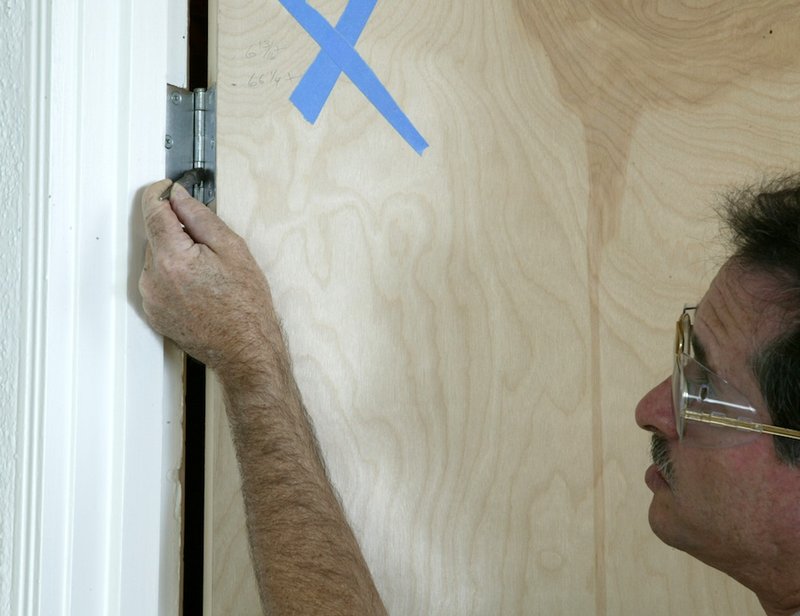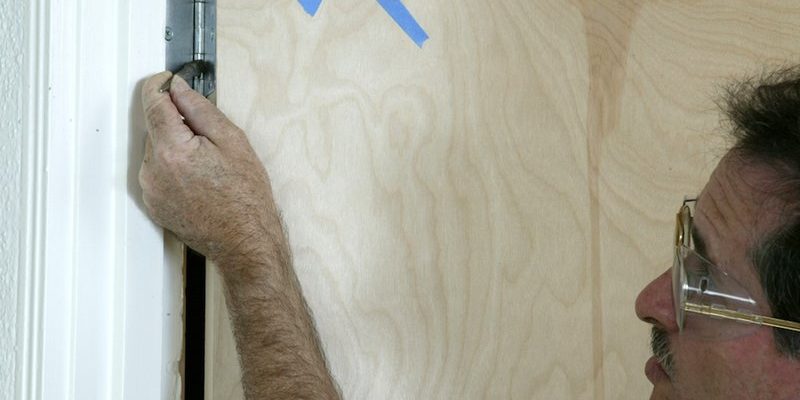
Understanding why this happens is key. Over time, door hinges can bend due to stress, temperature changes, or even lack of lubrication. You might notice the door scraping against the frame or not closing properly. It’s like watching the gears of a clock get stuck. Fortunately, troubleshooting and fixing a binding door hinge is something you can tackle without calling in a handyman.
In this guide, we’re going to break down the steps to identify and resolve a door hinge that’s binding because of a bent leaf. Whether you have a wooden door or a metal one, the process is fairly straightforward, and I’ll walk you through each step with care.
Identifying a Bent Leaf in Your Door Hinge
First things first, let’s pinpoint the problem. When you say a door hinge is binding, it often means that one of the leaves—the flat parts of the hinge—is bent. To identify the issue, follow these steps:
1. Inspect the Hinge Visually: Look closely at the hinge to see if one leaf appears misaligned compared to the other. You might see some gaps or uneven spaces. If you notice any warping or bending, that’s your culprit.
2. Listen for Scraping Sounds: Open and close the door slowly and pay attention to any scraping sounds. If you hear a *grating noise*, it’s a good indicator that the hinge isn’t working smoothly due to the bend.
3. Check Door Alignment: Is your door hanging unevenly? A bent hinge can cause the door to tilt or not align properly within the frame. This misalignment can create an extra strain on the hinge.
Once you’ve identified the bent leaf, you can move on to addressing the problem.
Gathering Your Tools for the Fix
Now that you know what the issue is, let’s grab some tools. You don’t need a full toolkit, but a few key items will make your life easier:
- Hammer: For gently coaxing the hinge back into shape.
- Flathead Screwdriver: Ideal for removing screws and adjusting the hinge.
- Lubricating Oil: To smooth out the hinge after making adjustments.
- Cloth: For wiping off excess oil and cleaning.
- Measuring Tape: To ensure everything is aligned correctly.
Having the right tools on hand will streamline the process. Trust me, nothing’s worse than getting halfway through a fix only to realize you’re missing a crucial item.
Removing the Binding Door Hinge
Before you start bending things back into place, you’ll need to remove the hinge from the door and the frame. Here’s how to do it:
1. Unscrew the Hinge: Use your flathead screwdriver to remove the screws from the hinge. It helps to keep one hand steady on the hinge while you do this. Don’t forget to keep the screws in a safe place so you don’t lose them.
2. Take the Hinge Off: Once the screws are out, gently pull the hinge away from the door and frame. Be careful not to drop it—those things can be heavy!
3. Examine the Hinge: With the hinge fully detached, now’s a great time to really look it over. See if there are any other issues, such as rust or damage, that may need attention.
Removing the hinge gives you access to fix the bent leaf without worrying about the door’s alignment.
Straightening the Bent Leaf
Here comes the part that might feel a bit daunting—straightening the bent leaf of the hinge. But don’t worry; it’s manageable! Here’s how:
1. Assess the Bend: Look closely at how the leaf is bent. If it’s a small bend, you might be able to fix it easily. For larger bends, some care is needed.
2. Gently Tap with a Hammer: Place the hinge on a flat surface. Use your hammer to gently tap on the bent area. Start lightly and increase pressure as needed. *The goal is to reshape it without breaking it.*
3. Check for Alignment: After a few taps, see if the leaf looks straighter. You can lay it flat against a level surface to check for evenness.
4. Repeat as Necessary: Depending on the severity of the bend, you might need to repeat these steps. The key is to go slowly and be patient.
By carefully straightening the bent leaf, you can restore the hinge’s functionality and prolong its lifespan.
Reinstalling the Hinge
Once you’re satisfied with the hinge’s shape, it’s time to put it back. Here’s a simple way to reinstall:
1. Align the Hinge: Position the hinge back onto the door and frame. Make sure it’s aligned properly with the pre-drilled holes.
2. Screw It Back In: Start replacing the screws. It’s best to do this in a crisscross pattern—tightening opposite screws as you go. This keeps the hinge aligned.
3. Test the Door: After everything is tightened, give the door a gentle push. Does it swing open and close smoothly now? If so, you’re in great shape!
4. Lubricate the Hinge: Finally, don’t forget to add a bit of lubricating oil to the hinge. Just a few drops will help prevent future binding.
Reinstalling the hinge correctly ensures you won’t have to go through this process again anytime soon.
Preventing Future Binding Issues
Now that you’ve tackled the current issue, let’s talk about how to keep your door hinges from binding again in the future. It’s like avoiding those annoying smartphone glitches—prevention is key!
1. Regular Inspections: Check your door hinges every few months. Look for signs of wear or bending before it becomes a bigger problem.
2. Lubricate Regularly: A little maintenance goes a long way. Apply lubricating oil or silicone spray to the hinges at least twice a year.
3. Avoid Overloading Doors: If you have a door that carries a lot of weight, consider reinforcing it with additional hinges or ensuring it’s supported properly.
4. Keep an Eye on Changes: Changes in weather or humidity can affect how materials expand or contract. If you notice any shifts, check your hinges.
By following these tips, you’ll keep your doors swinging smoothly without interruptions.
Fixing a door hinge that’s binding due to a bent leaf might seem like a daunting task, but it’s entirely manageable with a little patience and the right approach. Just like any home repair, taking it step by step helps demystify the process. From identifying the problem to straightening the leaf and preventing future issues, you now have the tools and knowledge to tackle this.
Here’s the thing: even if you’re not a DIY expert, handling these small repairs can save you time and money. Plus, there’s nothing quite like the satisfaction of fixing something on your own. So, next time you encounter a binding door hinge, remember—you’ve got this!
